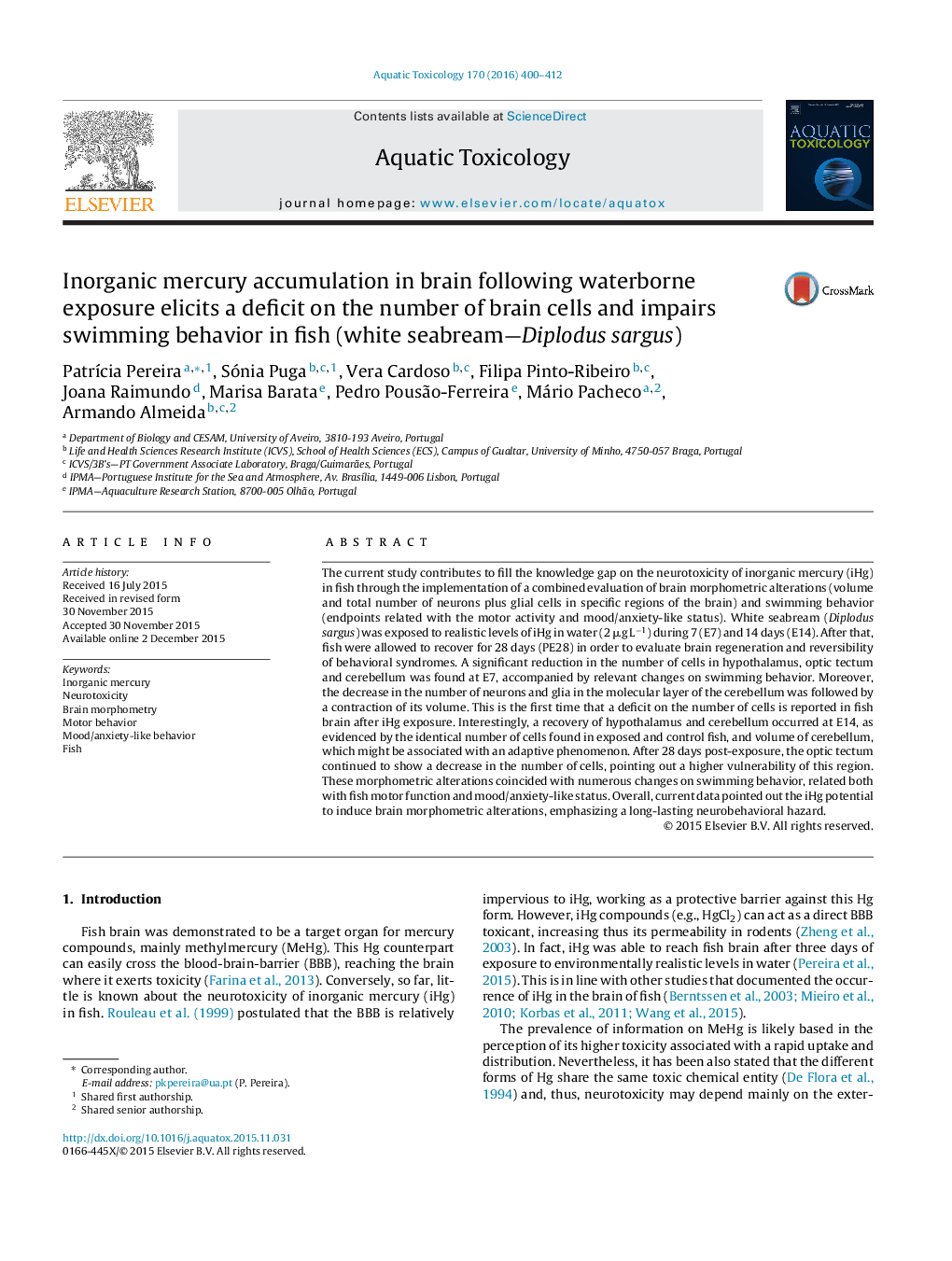| کد مقاله | کد نشریه | سال انتشار | مقاله انگلیسی | نسخه تمام متن |
|---|---|---|---|---|
| 4529002 | 1625935 | 2016 | 13 صفحه PDF | دانلود رایگان |
• Neurotoxicity of iHg was assessed in fish through brain morphometrics and swimming behavior.
• iHg elicited a reduction of cells number in hypothalamus, optic tectum and cerebellum.
• iHg impaired the motor function of fish and altered mood/anxiety–like behavior.
• The optic tectum showed a higher vulnerability to iHg than hypothalamus and cerebellum.
• iHg needs to be considered in future studies addressing Hg toxicity in fish.
The current study contributes to fill the knowledge gap on the neurotoxicity of inorganic mercury (iHg) in fish through the implementation of a combined evaluation of brain morphometric alterations (volume and total number of neurons plus glial cells in specific regions of the brain) and swimming behavior (endpoints related with the motor activity and mood/anxiety-like status). White seabream (Diplodus sargus) was exposed to realistic levels of iHg in water (2 μg L−1) during 7 (E7) and 14 days (E14). After that, fish were allowed to recover for 28 days (PE28) in order to evaluate brain regeneration and reversibility of behavioral syndromes. A significant reduction in the number of cells in hypothalamus, optic tectum and cerebellum was found at E7, accompanied by relevant changes on swimming behavior. Moreover, the decrease in the number of neurons and glia in the molecular layer of the cerebellum was followed by a contraction of its volume. This is the first time that a deficit on the number of cells is reported in fish brain after iHg exposure. Interestingly, a recovery of hypothalamus and cerebellum occurred at E14, as evidenced by the identical number of cells found in exposed and control fish, and volume of cerebellum, which might be associated with an adaptive phenomenon. After 28 days post-exposure, the optic tectum continued to show a decrease in the number of cells, pointing out a higher vulnerability of this region. These morphometric alterations coincided with numerous changes on swimming behavior, related both with fish motor function and mood/anxiety-like status. Overall, current data pointed out the iHg potential to induce brain morphometric alterations, emphasizing a long-lasting neurobehavioral hazard.
Journal: Aquatic Toxicology - Volume 170, January 2016, Pages 400–412
